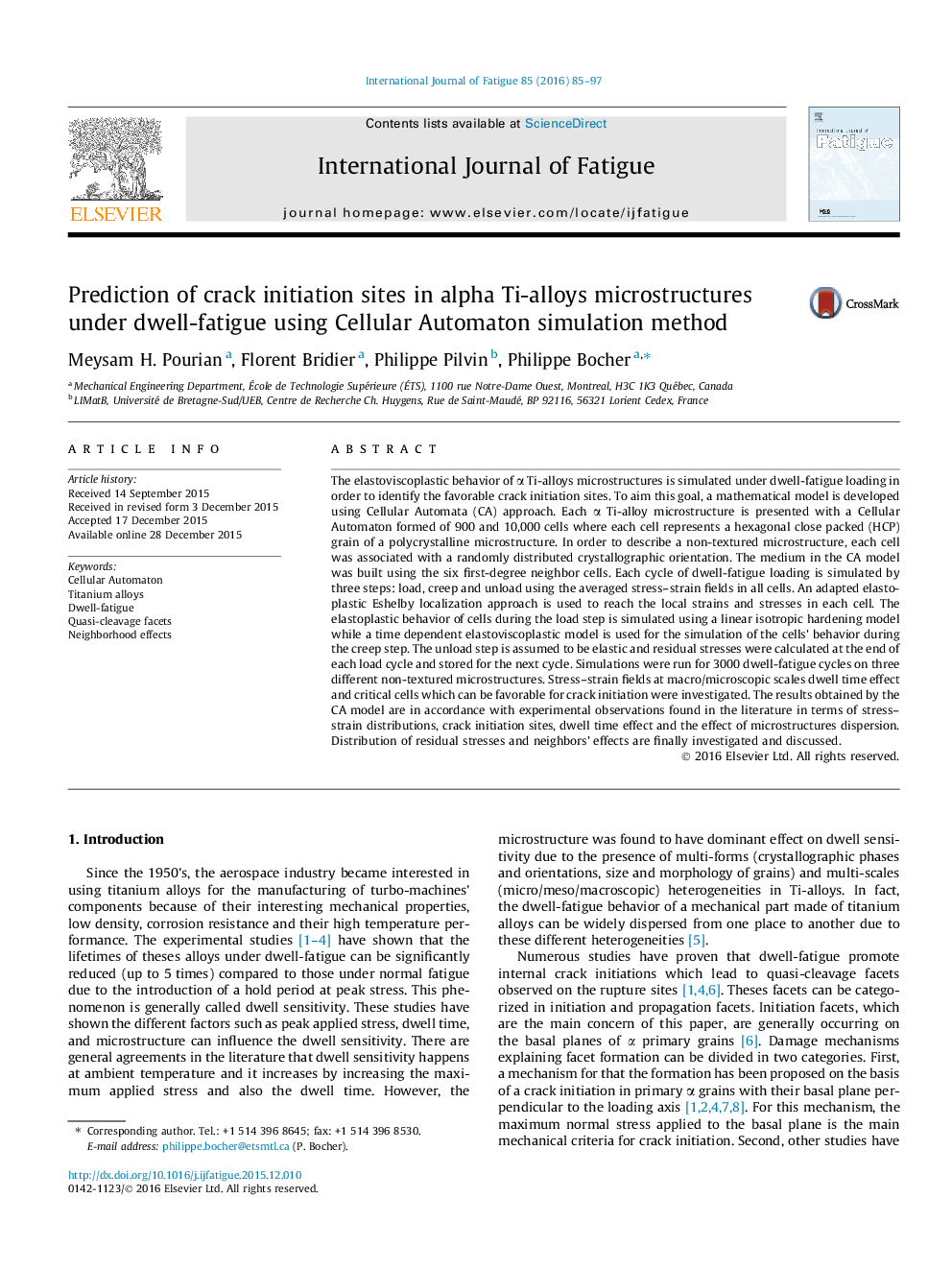| کد مقاله | کد نشریه | سال انتشار | مقاله انگلیسی | نسخه تمام متن |
|---|---|---|---|---|
| 778163 | 1463744 | 2016 | 13 صفحه PDF | دانلود رایگان |
• A mathematical model based on Cellular Automaton (CA) is proposed.
• Elastoviscoplastic behavior of HCP Titanium polycrystals was simulated.
• An Eshelby-type transition rule is used to localize macroscopic strain.
• Neighbors effects, dwell sensitivity and residual stresses were investigated.
• Potential crack initiation sites were predicted.
The elastoviscoplastic behavior of α Ti-alloys microstructures is simulated under dwell-fatigue loading in order to identify the favorable crack initiation sites. To aim this goal, a mathematical model is developed using Cellular Automata (CA) approach. Each α Ti-alloy microstructure is presented with a Cellular Automaton formed of 900 and 10,000 cells where each cell represents a hexagonal close packed (HCP) grain of a polycrystalline microstructure. In order to describe a non-textured microstructure, each cell was associated with a randomly distributed crystallographic orientation. The medium in the CA model was built using the six first-degree neighbor cells. Each cycle of dwell-fatigue loading is simulated by three steps: load, creep and unload using the averaged stress–strain fields in all cells. An adapted elastoplastic Eshelby localization approach is used to reach the local strains and stresses in each cell. The elastoplastic behavior of cells during the load step is simulated using a linear isotropic hardening model while a time dependent elastoviscoplastic model is used for the simulation of the cells’ behavior during the creep step. The unload step is assumed to be elastic and residual stresses were calculated at the end of each load cycle and stored for the next cycle. Simulations were run for 3000 dwell-fatigue cycles on three different non-textured microstructures. Stress–strain fields at macro/microscopic scales dwell time effect and critical cells which can be favorable for crack initiation were investigated. The results obtained by the CA model are in accordance with experimental observations found in the literature in terms of stress–strain distributions, crack initiation sites, dwell time effect and the effect of microstructures dispersion. Distribution of residual stresses and neighbors’ effects are finally investigated and discussed.
Figure optionsDownload as PowerPoint slide
Journal: International Journal of Fatigue - Volume 85, April 2016, Pages 85–97
